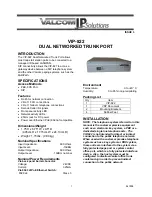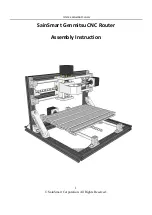
186
To set the DSCP value for DHCPv6 packets sent by the DHCPv6 server:
Step Command
Remarks
1.
Enter system view.
system-view
N/A
2.
Set the DSCP value for
DHCPv6 packets sent by the
DHCPv6 server.
ipv6 dhcp dscp
dscp-value
By default, the DSCP value in DHCPv6
packets sent by the DHCPv6 server is
56.
Configuring DHCPv6 binding auto backup
The auto backup feature saves DHCPv6 bindings to a backup file, and allows the DHCPv6 server to
download the bindings from the backup file at the server reboot. The bindings include the lease
bindings and conflicted IPv6 addresses. They cannot survive a reboot on the DHCPv6 server.
The DHCPv6 server does not provide services during the download process. If a connection error
occurs during the process and cannot be repaired in a short amount of time, you can terminate the
download operation. Manual interruption allows the DHCPv6 server to provide services without
waiting for the connection to be repaired.
To configure DHCPv6 binding auto backup:
Step Command
Remarks
1.
Enter system view.
system-view
N/A
2.
Configure the DHCPv6 server
to back up the bindings to a
file.
ipv6 dhcp server database
filename
{
filename
|
url
url
[
username
username
[
password
{
cipher
|
simple
}
string
] ] }
By default, the DHCPv6 server
does not back up the DHCPv6
bindings.
With this command executed,
the DHCPv6 server backs up its
bindings immediately and runs
auto backup.
3.
(Optional.) Manually save the
DHCPv6 bindings to the
backup file.
ipv6 dhcp server database
update now
N/A
4.
(Optional.) Set the waiting
time after a DHCPv6 binding
change for the DHCPv6
server to update the backup
file.
ipv6 dhcp server database
update interval
interval
The default waiting time is 300
seconds.
If no DHCPv6 binding changes,
the backup file is not updated.
5.
(Optional.) Terminate the
download of DHCPv6
bindings from the backup file.
ipv6 dhcp server database
update stop
N/A
Advertising subnets assigned to clients
This feature enables the route management module to advertise subnets assigned to DHCPv6
clients. This feature achieves symmetric routing for traffic of the same host.
, Router A and Router B act as both the DHCPv6 server and the BRAS device.
The BRAS devices send accounting packets to the RADIUS server. To enable the BRAS devices to
collect correct accounting information for each RADIUS user, configure the DHCPv6 server to
advertise subnets assigned to clients. The upstream and downstream traffic of a RADIUS user will
pass through the same BRAS device.
















































